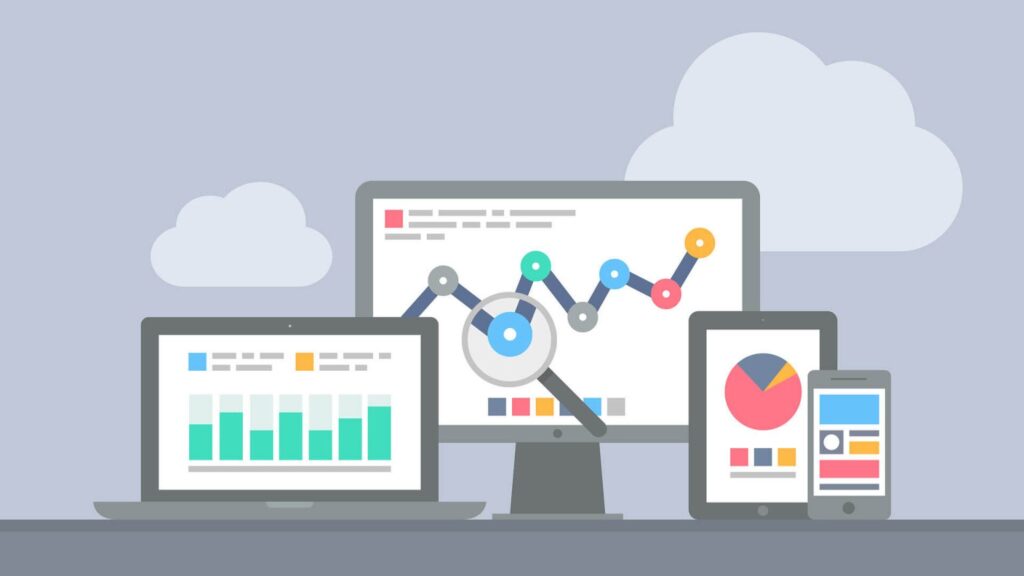Introduction
Insurance industry is currently experiencing an explosive development driven by technological innovations. One notable shift has been the emergence of predictive analytics Through the use of statistical algorithms and machine learning algorithms, Predictive Analytics in Insurance will be able to predict future outcomes, specifically in relation to the issue of claims. The approach doesn’t just consist of simply looking over records but also anticipating the future. In this blog, we’ll look at how predictive analytics can revolutionize the claim process in a variety of ways, from increasing accuracy to making decisions faster.

The Problem: Traditional Claims Processes
In the past, insurance claims have been an inefficient and long-winded procedure. No matter what type of insurance you choose, whether it’s car, home or health insurance clients often have long waiting periods in order to process claims. For insurance companies, the process of assessing claims is similarly challenging. They need to determine the authenticity of every claim, evaluate the possible costs, and decide on the amount to pay.
The traditional claim assessment process is usually manual, which requires adjusters who handle claims to look over extensive reports, photographs, as well as witness statements. The result is a delay, mistakes by human beings as well as fraud that slips through the cracks. Additionally the fact that many insurance companies are struggling to distinguish between high-risk and low-risk insurance claims, making it challenging to distribute the resources effectively.
That’s where predictive analytics come into the picture. Through the use of vast quantities of both real-time and historical information predictive analytics will streamline claim processing, decrease the chance of errors and help insurers to detect fraudulent claims prior to them becoming problematic.
The thing that excites me most is the opportunity for insurers to customize the claim process. As the technology of data becomes more sophisticated, I can see the future of insurers being able not just to predict claims but can also customize their offerings to the individual customer according to their preferences and behavior. This kind of personalized service will significantly enhance the satisfaction of customers.
The Solution: Predictive Analytics in Insurance Claims
Predictive analytics is based on massive data and (AI), as well as ML, in order to assist insurance firms in making better choices. Instead of basing decisions on historical data predictive models look at patterns and trends in order to predict the likelihood of events to come. It allows insurance companies to anticipate a variety of variables in the claims procedure, including:
- The frequency of claims and the severity Models predict the possibility that a claim will be filed, as well as the size that could be the settlement. Insurance companies can make better use of their resources and cost policies more effectively.
- The system detects fraud: It detects patterns that suggest possible fraud. In the case of example, if several allegations are based on the same area or have similar damages, The system will flag those claims to be investigated further.
- Models that predict customer behavior are able to examine customer behaviour like claim filing patterns, and preferences for communication to determine which customers may need extra attention during the claim process.
Predictive analytics have recently been a fascinating innovation in the world of insurance. In my opinion, data-driven decision-making is the future. From my own experiences I’ve witnessed firsthand the way the use of predictive models can help insurance companies become proactive instead of reacting.
Case Study: Allstate Insurance
Allstate is a leading insurer that has been using predictive analytics over the last few years in order to boost its claims procedure. They have implemented machine learning algorithms to analyze information taken from a variety of sources including the history of claim data, patterns of weather as well as social media activities. Through this, they could anticipate the possibility of an application being made and estimate the amount of the claim prior to when the claim was made.
Allstate was one of the pioneers in using predictive analytics to detect fraudulent claims, using it to spot irregularities in claims patterns that might indicate potential instances of fraud. For example, it identified a set of auto claims within an area of a particular geographic region that had similarities with respect to the kind of cars that were involved, the circumstances of accidents or even the date that the claim was filed.
I believe predictive analytics is a crucial element in improving efficiency as well as decreasing operational costs. In focusing on high-risk and significant claims, insurance companies can save resources, and also provide faster service to all of their customers.

How Predictive Analytics Works in Insurance Claims
In its simplest form, predictive analytics utilizes historical information to build models that predict the future of developments. These models are created with statistical algorithms which look at past claims information as well as customer data and external data such as regional crime patterns, weather patterns, or data.
- Data Collection: The initial phase of predictive analytics involves collecting large amounts of information. It could include profiles of customers as well as claims history, weather patterns, as well as the data of third parties such as accidents or credit scores.
- Data Processing: Once information is gathered and processed, it must be organized and cleaned. The process involves eliminating any inconsistent information or other irrelevant details which could cause the analysis to be distorted.
- Model Building: The following machines learn algorithms that are then applied to cleansed information. The algorithms detect patterns and relationships which aren’t immediately apparent to humans.
- Prediction and Decision-Making The model then generates forecasts based on patterns that are identified.
The benefit of predictive analytics is the way it doesn’t use traditional information. It incorporates a variety of information that ranges from social media usage to IoT sensors in order for a complete understanding of a claim’s probability and cost potential.
Benefits of Predictive Analytics for Insurance Claims
- Improved Claims Processing Speed: The use of predictive models speeds up the process of settling claims by swiftly analyzing the probability of a claim as well as its worth. Adjusters can focus their attention on the most complicated or valuable claims. This can reduce the time required for less complex cases.
- Better Accuracy: The use of model-driven data and predictive algorithms helps insurers make more precise decision-making. It reduces the chance of human error and lowers the possibility of underpaying or overpaying claims.
- Fraud Prevention: Untrue claims could cost insurers billions of dollars per year. The use of predictive analytics allows them to detect irregular patterns before they become apparent, which will enable insurers to examine the possibility of fraud before it ends in a settlement.
- Enhanced Customer Experience: expediting claims processing, as well as providing better assessment and predictive analytics lead to better customer service. The likelihood is higher for customers to be loyal to an insurance provider who processes claims fast and precisely.
From my experience, the quality of the data is an important obstacle to success. When the information used is imperfect or flawed, the predictive model could produce a wrong conclusion. I think that insurance companies must invest in reliable, clean sources of data to reap the advantages of predictive analytics.
Challenges and Considerations in Implementing Predictive Analytics
Although the advantages of predictive analytics are evident there are some challenges insurance companies need to address before leveraging fully the power of this technology.
- Data Privacy Issues: Predictive analytics rely on huge datasets, a few of which could contain confidential customer data. Insurance companies must make sure they are using the appropriate security procedures in order to protect this data from theft or abuse.
- Integration of Existing Systems: Many insurers use outdated systems which aren’t designed to deal with the complexity of predictive analytics. Integration of new technologies into existing systems could be expensive and lengthy.
- Model accuracy: Predictive models are only as reliable as the information they’re built upon. If the data are not complete or biased, then the predictions made by the model could not be accurate, which could lead to inadequate decisions.
- Customer Trust: Although predictive analytics could improve efficiency, some customers are cautious about automated decision-making processes. Insurance companies must find a compromise between the human factor and automation for transparency and to keep confidence in their customers.
The most significant benefit of predictive analytics is the ability of predictive analytics to provide greater assurance to the claim process. The most appealing feature of this technology is the potential for it to decrease the uncertainty of both insurers and customers of policies. With the ability to predict outcomes with precision, the insurer can give more equitable settlements while customers are able to receive quicker resolutions.
It’s not a matter of whether predictive analytics will be an integral part of the claim process instead, how fast it is going to be adopted by all industries. As I see it I think the future is positive.

Conclusion
Predictive analytics has proven to be an effective tool for insurance claims. It offers advantages ranging from speedier claim processing, to better the detection of fraud. The ability of data-driven decision-making can help insurers manage the maze of claims as well as boost the satisfaction of customers. But, like any emerging technology, it’s not without challenges, like making sure data is secure and how integrating innovative systems with existing infrastructure.
However, the benefits of predictive analytics can’t be overlooked. While the insurance industry is evolving and evolving, insurers that embrace the use of predictive analytics are better able to manage claims effectively while reducing costs and offering more personalized service for their clients. Suppose you’re a person who is following the evolution of this technology.
FAQS
What is basically the need of predictive analytics in the insurance industry?
Insurance companies use predictive analytics techniques such as machine learning algorithms for statistical analysis to look backward and predict future events and outcomes, specifically related to insurance claims. Knowing their potential costs as well as any patterns which suggest fraud or dangerous scenarios.
What can predictive analytics do to improve the process of submitting claims?
Predictive analytics can streamline the claims process, allowing insurers to evaluate the chance of a claim being submitted, estimate the cost and identify fraudulent claims before they become. This results in quicker making decisions, better assessment of claims, and better utilization of resources.
Can predictive analytics detect fraudulent claims?
Predictive analytics are able to identify unusual patterns or oddities in claims data, which could be a sign of fraud. Through analyzing claims from the past and identifying the common traits of fraudulent claims. Insurers are able to identify suspicious claims before they can result in payouts.
Which data used in predictive analytics?
Models that predict the future rely on various data sources such as historic claims data such as customer details, other external information (e.g. weather conditions, as well as traffic trends) or the activity of social media. The variety of data used in predictive models helps create greater accuracy and complete models.
What is the accuracy of predictions that predictive analytics make in the field of insurance?
The precision of predictive analytics is contingent upon the quantity and quality of data utilized, and also the algorithm used. If the data is accurate, reliable, and free of bias, models can be extremely precise when it comes to forecasting claims probabilities as well as costs and risks.
What are the major advantages of predictive analytics to insurance companies?
Predictive analytics can provide a variety of advantages, such as faster claim processing, more accurate decision-making, early identification of fraud, improved customer service, and improved distribution of resources. Additionally, it helps insurance companies price policies more precisely.
What obstacles do insurance companies confront when they implement predictive analytics?
Insurance companies may face problems like privacy issues, problems integrating in relation to legacy systems, maintaining the quality of data, as well as maintaining the trust of their customers. Furthermore, the initial expense of setting up predictive analytics could be substantial.
Are predictive analytics the next step for insurance claims?
Predictive is the next step in the insurance claim processing. With technology continuing to advance insurance companies are more and more embracing predictive models that can improve efficiency, lower operational costs as well as provide superior service to customers. This trend is likely to increase as more insurers are aware of the benefits of data-driven decision-making.
How can predictive analytics improve customer satisfaction in claims for insurance?
Predictive analytics could enhance the satisfaction of customers by speeding the process of submitting claims, increasing the quality of payouts as well as reducing the risk of mistakes. A faster, more precise claims processing results in greater customer satisfaction. In addition, predictive models may also assist insurers to customize their services according to the individual demands.

